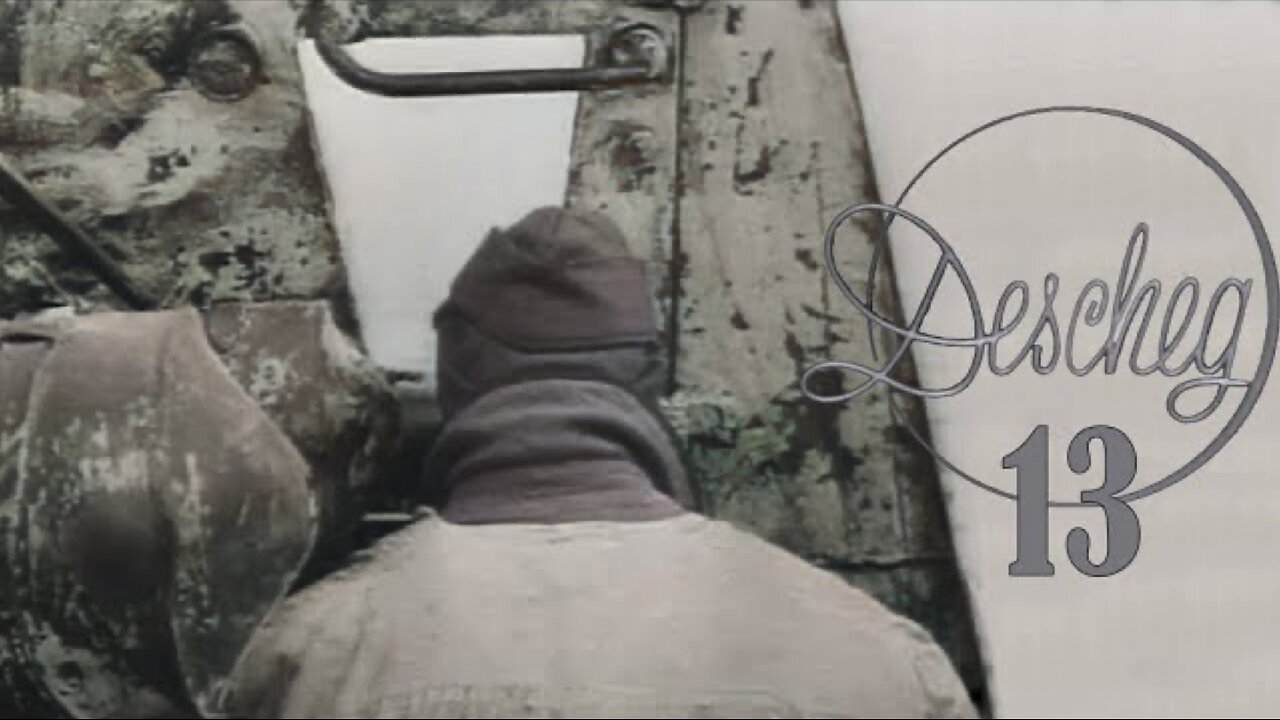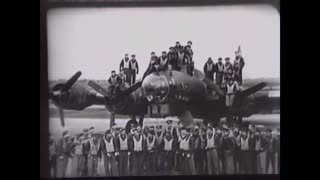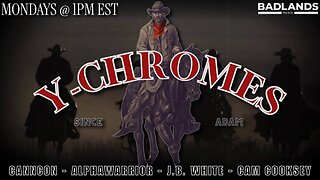Premium Only Content

German Newsreel 1943 MONATSSCHAU Nr. 13, War Periodical SIGNAL Nr. 5
🔥PREVIEW ALL YOUTUBE VIDEOS
www.Patreon.com/Military1945
Episode 212
MONATSSCHAU
Nr. 13, April 1943
Greece
2:16 - Heavy weapons and newly arrived German soldiers marching through the streets of Athens; loading of tanks, trucks in Athen's port and then transport to the island of Crete; destroyer secures the convoy.
5:17 - Crete's coastline; construction of tank obstacles on the southern coast; barbed wire is set up, camouflaged gun emplacements; German fighters take off from Crete's airbase.
4:39 - Japanese troops in operations in the province of Junnan; advancing through the jungle; Budhist priest; advance in Tshkiang Provence; fighting in mountainous areas against enemy partisan groups.
6:41 - Awarding of the Knights Cross to the 19 year old Dutch volunteer Mooyman by General Sinhuber south of Lake Ladoga (20.02.1943),
Battle for Charkow.
7:16 - Armored and motorized units of the Waffen-SS advancing on Charkow; motorcycle troops; Flak batteries against land targets; German troops enter Charkow; tanks and infantry support guns in street fighting; the city is retaken on 14.03.1943.
SIGNAL Nr. 5, March 1943
11:46 - The photographs and this article were produced by a propaganda company reporter embedded with a unit on the Easter Front. It’s titled "Motorcycle Troops behind Stuka". It describes how the fast moving elements of a division including armor, PzGr, and motorcycle troops race forwards hot on the heels of a retreating enemy while the majority of the division moves up slowly with little more to do than collect POWs and break up what’s left of local pockets of enemy resistance. Fuel for the quick advance of the mobile units is taken from stocks that had been flown in the evening before.
During the night the Bolsheviks had broken contact and retreated out of the area abandoning their injured and those who couldn’t keep up to their fate. German night reconnaissance planes flew in low and reported that the Soviets had set up defensive positions about 30 km ahead in a rail hub.
In the early morning a squadron of Stukas flys over head and bombards the new enemy positions effectively. In the meantime artillery has been brought up, and in cooperation with well positioned spotters, also begin firing on the enemy positions.
The motorcycle troops, approaching the town, come under heavy enemy fire. They leave their motorcycles outside of the range of the enemy MGs and move forwards in groups, some directly and others on the flanks. They concentrate their fire on the industrial rail area that the enemy is holed up in and after a short but intense exchange of fire the enemy positions are taken.
3rd Battle of Kharkov
The Third Battle of Kharkov was a series of battles on the Eastern Front of World War II, undertaken by German Army Group South against the Soviet Red Army, around the city of Kharkov between 19 February and 15 March 1943. Known to the German side as the Donets Campaign, and in the Soviet Union as the Donbas and Kharkov operations, the German counterstrike led to the recapture of the cities of Kharkov and Belgorod.
As the German 6th Army was encircled in the Battle of Stalingrad, the Red Army undertook a series of wider attacks against the rest of Army Group South. These culminated on 2 January 1943 when the Red Army launched Operation Star and Operation Gallop, which between January and early February broke German defenses and led to the Soviet recapture of Kharkov, Belgorod, Kursk, as well as Voroshilovgrad and Izium. These victories caused participating Soviet units to over-extend themselves. Freed on 2 February by the surrender of the German 6th Army, the Red Army's Central Front turned its attention west and on 25 February expanded its offensive against both Army Group South and Army Group Center. Months of continuous operations had taken a heavy toll on the Soviet forces and some divisions were reduced to 1,000–2,000 combat-effective soldiers. On 19 February, Field Marshal Erich von Manstein launched his Kharkov counterstrike, using the fresh II SS Panzer Corps and two panzer armies. Manstein benefited greatly from the massive air support of Field Marshal Wolfram von Richthofen's Luftflotte 4, whose 1,214 aircraft flew over 1,000 sorties per day from 20 February to 15 March to support the German ground troops, a level of airpower equal to that during the Case Blue strategic offensive a year earlier.[5]
The Wehrmacht flanked, encircled, and defeated the Red Army's armored spearheads south of Kharkov. This enabled Manstein to renew his offensive against the city of Kharkov proper on 7 March. Despite orders to encircle Kharkov from the north, the SS Panzer Corps instead decided to directly engage Kharkov on 11 March. This led to four days of house-to-house fighting before Kharkov was recaptured by the SS Division Leibstandarte on 15 March.
-
 8:25
8:25
Military1945
3 months agoDie Wehrmacht 1944 Nr 4 Pt 2 - Air Defence - Flak 88 - FW 190 - Me 109 - Goering - 8th Air Force
961 -
 3:07:37
3:07:37
Viss
3 hours ago🔴LIVE - Dominating The Battleground with Tactics! - PUBG
19K1 -
 1:38:15
1:38:15
Russell Brand
3 hours agoGlastonbury Goes RADICAL - Police Probe 'Death to the IDF' Chant - SF605
192K17 -
 1:32:42
1:32:42
Tucker Carlson
3 hours agoRFK Jr. Provides an Update on His Mission to End Skyrocketing Autism and Declassifying Kennedy Files
72.1K52 -
 1:09:56
1:09:56
Sean Unpaved
3 hours agoCode, Kill, Cash & Trades: Beasley Bets & NFL Trades
25.4K2 -
 1:06:29
1:06:29
MTNTOUGH Podcast w/ Dustin Diefenderfer
5 hours agoJeremy Noble: What Army Rangers Do Every Day to Build Unbreakable Mental Toughness | MTNPOD #122
17.1K -
 LIVE
LIVE
SternAmerican
1 day agoElection Integrity Call – Monday, June 30 at 2 PM EST | Hosted by Steve Stern & Raj Doraisamy
74 watching -
 1:04:25
1:04:25
Timcast
4 hours agoDemocrat Zohran Mamdani Calls For TAXING WHITE PEOPLE, Media Says HES NOT Communist
227K83 -
 1:04:27
1:04:27
Rebel News
3 hours agoPoilievre byelection called, Carney folds to Trump, Dr. Tam wins Order of Canada | Rebel Roundup
22.8K29 -
 1:38:13
1:38:13
Badlands Media
9 hours agoY-Chromes Ep. 39
30.4K3